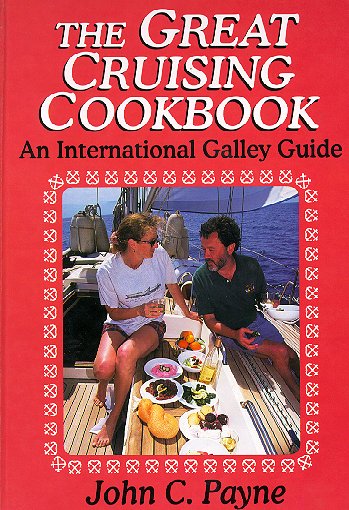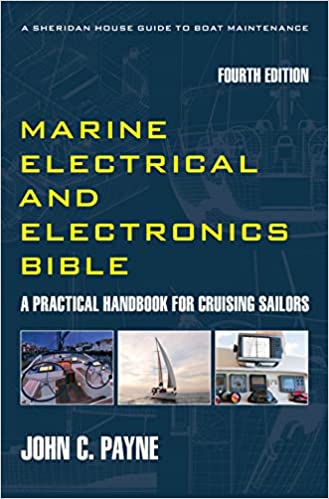12 Volt Marine Refrigeration Systems
12 volt marine refrigeration systems is a big subject. I have owned a few yachts and gone through the process of specifying and installing yacht refrigeration systems, along with upgrading or building new. Years ago I served on some of the most automated and advanced refrigerated cargo ships afloat as Electrical Officer/Engineer, carrying bananas, apples and grapes, lamb, frozen chicken and beef.
The multi-compressor refrigeration and computerised control systems required a great deal of maintenance. (and yes! I know all the words of the Banana Boat Song!) And have eaten far too many bananas on those voyages.
They were big systems and all of the issues that were involved on these are relevant to the smaller yacht refrigeration system.
There are many criteria for selection when planning a yacht refrigeration system and all of the following should be considered:
How big is ice box? This means calculating the interior dimensions in cubic feet or meters.
What type, quantity and quality of insulation material on the ice box?
How much cooling is required? Are you keeping frozen food frozen, or making ice cubes or just normal perishables at 5 degrees C.
How large a freezer required?
A big question with yacht refrigeration is where will you be using the boat, tropical cruising or cold and temperature areas?
What type of power resources? Auxiliary engine, AC generator, DC systems only.
If DC electrical system what is the battery bank capacity, what is the alternator output rating, and how long each day will you be charging.
What type of boating or cruising will you do? Weekend, coastal, offshore or serious cruising?
Marine Electrical Electronics Bible12 Volt Marine Refrigeration Systems
Nothing beats a cold beer or other beverage or cold perishables. Most perishables are maintained at above 32 degrees F to 50 degrees F. Perishable foods, such as meats and dairy products will deteriorate rapidly due to the growth of bacteria and other organisms. Good yacht refrigeration must consider this as your crew health depends on it.
A well-found galley is important on any sailing yacht or boat, and good yacht refrigeration is central to this. Similarly properly functioning refrigeration on hold, fishroom chiller and ice making systems on fish, shrimp and prawn trawlers is essential.
The refrigeration system must be properly installed, selected and maintained. On the Fahrenheit Scale, freezing point is 32ºF, and boiling point is 212ºF. On the Celsius Scale freezing point is zero 0ºC Centigrade and boiling point 100ºC. Conversion is ºC = 5/9 x ºF, or ºF = 9/5 x ºC.
12 Volt Marine Refrigeration Systems
The fundamental principle is that when a high-pressure liquid or gas expands, temperature reduces. In a refrigeration system, a compressor is used to pump the refrigerant fluid, normally Freon, around the system. The typical cycle of a 12 Volt Marine Refrigeration Systems is as follows:
Compression The compressor pumps the refrigerant vapor; this then increases the refrigerant gas pressure, which becomes hot. The high-pressure hot gas then passes through to the condenser.
Condensation The hot gas passes through a condenser, which acts as a heat exchanger and releases heat. The condenser is either air cooled by natural convection, a fan, or water passing through coils. Coils are typically made from cupro-nickel/copper. The gas condenses into a hot liquid back to the receiver. A receiver is essentially a pressure vessel that maintains the refrigerant in a liquid state before passing it through an expansion valve. It then passes through to the expansion valve as a high-pressure liquid.
Driers There will always be a small amount of water vapour remaining in a system regardless of purging and evacuation. Water causes ice formation at the expansion valve causing either total blockage or bad operation. The drier is installed in the liquid line between the receiver and expansion valve serving as both a filter and removing water. The drier desiccant materials are of silica gel or activated alumina. Flared units enable easy change-out when saturated rather than soldered ones, and removable cartridge type are even better. Internal corrosion begins at above 15ppm, also causing oil breakdown making it acidic, and contributing to motor burnouts in hermetic systems.
Sight Glass The sight glass allows visual inspection of the liquid. Bubbles indicate low refrigerant levels. All indicators also incorporate a moisture indicator. Indicators are chemical and changes color to Pink in R12 systems, blue if safe, and in R22 green is dry and pink is wet. The site glass will show bubbles if refrigerant is low, often this is seen at start-up and stop. It will also show restrictions or blocked filter driers ahead of the sight glass.
Click on this link to find out more about. Marine Refrigeration and all you need to know about 12 Volt Marine Refrigeration Systems
Click on this link to find out more about Marine Refrigeration Insulation, with all you need to know.
12 Volt Marine Refrigeration Systems
Refrigerant Control. The thermostatic expansion valve (TX valve) regulates the rate of refrigerant liquid flow from liquid receiver high side into the evaporator low side and maintain pressure difference and therefore expansion into the evaporator is in exact proportion to the rate of liquid leaving the evaporator. Flow is regulated in response to both pressure and temperature within the evaporator. The thermal sensing element is placed on the outlet end of the evaporator and where installed also motor thermal sensing element, and consists of a bulb and capillary.
Valves can normally be adjusted for optimum temperature. This pressure reduction causes a fall in temperature of the liquid. The cold liquid then passes to the evaporator. The Thermostatic TX valve is controlled by two conditions, the temperature of the control element and the evaporator pressure, Automatic TX valves allow refrigerant flow only if evaporator pressure falls when the compressor operates. The single greatest cause of TX valve failure is dirt, acids, moisture and sludge in the system. All of these will freeze up or jam the valve.
Evaporator. The cold liquid passes through to the evaporator cooling surfaces (or eutectic tanks). Heat within the refrigerator space is absorbed by the cold refrigerant causing the air to cool. The absorption of the heat causes the refrigerant liquid to evaporate into a gas. Heat is removed by either conduction on evaporator, radiation, and convection.
Recycle. The now cold gas is suctioned back into the compressor to repeat the cycle.
12 Volt Marine Refrigeration Systems Insulation
Refrigerants. The most commonly used refrigerant was Freon 12 (R12), and as this is harmful to the ozone layer, like all CFC gases is being replaced Freon R22. HFC-134a is also becoming a new "standard" frig system gas. This gas type an obvious choice as auto air conditioning systems will all use the same gas, having already made the conversion. You cannot use HFC-134a in an existing Freon 12 system as virtually all the system components are incompatible and will require renewal and most manufacturers now use HFC-134a systems. 12 Volt Marine Refrigeration Systems and all you need to know.

